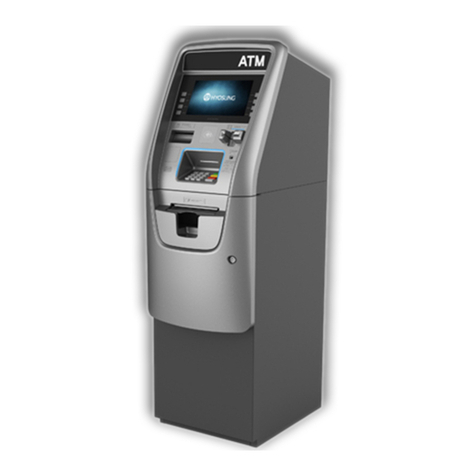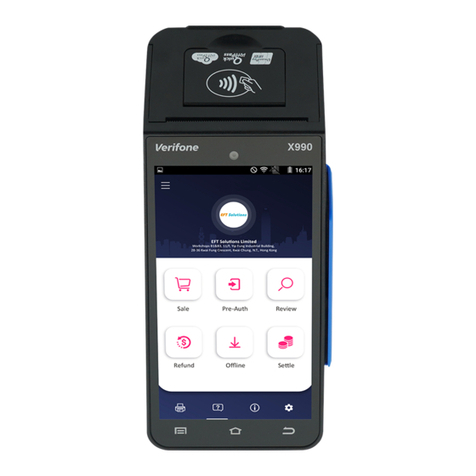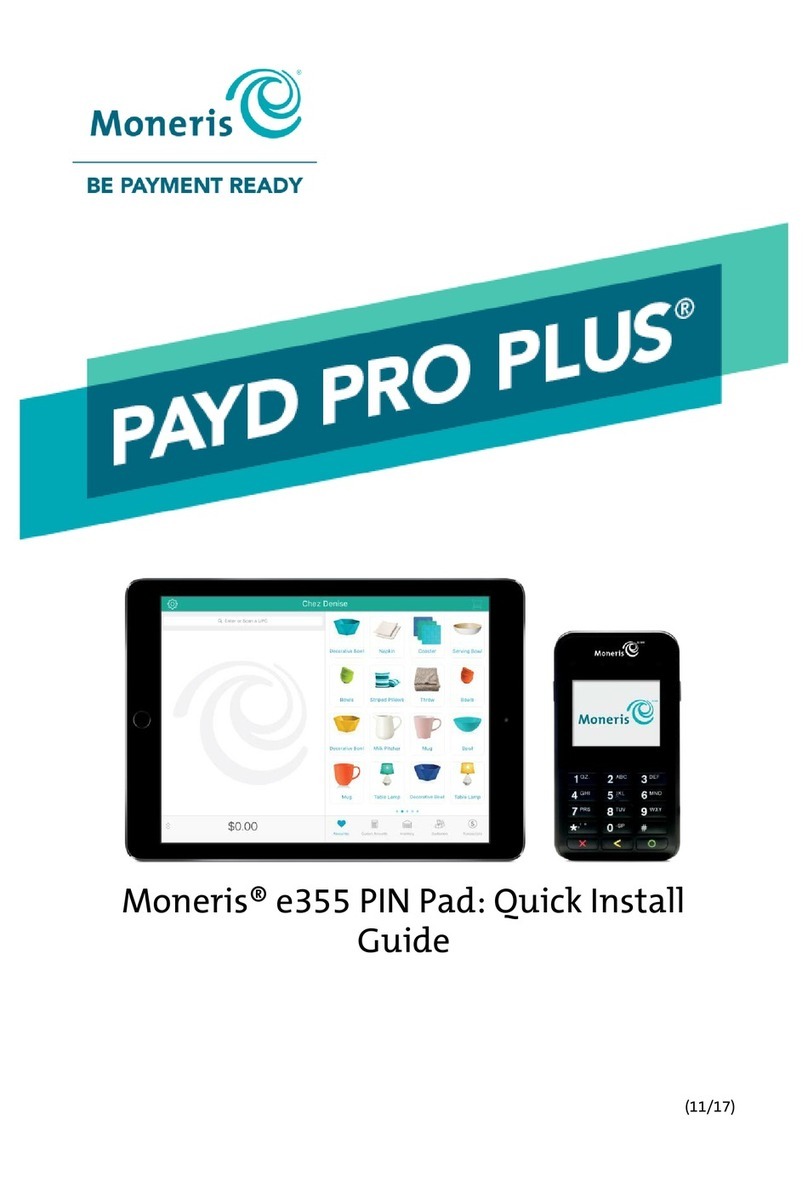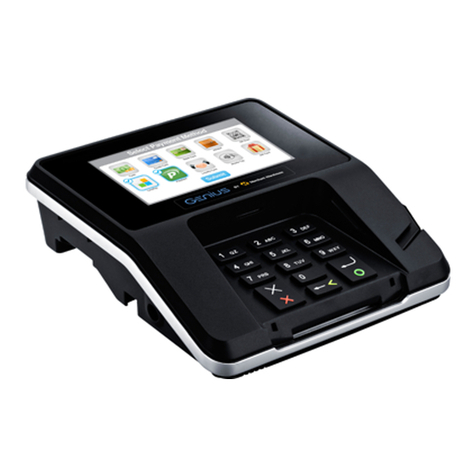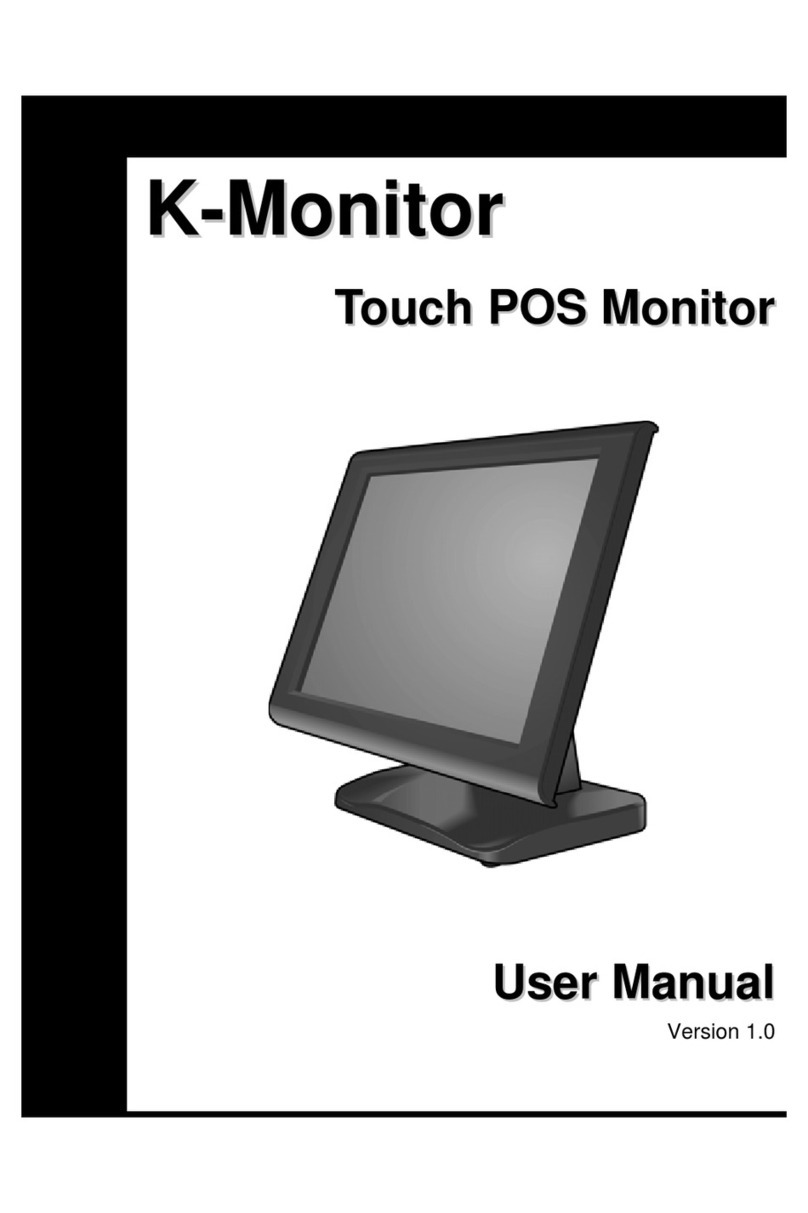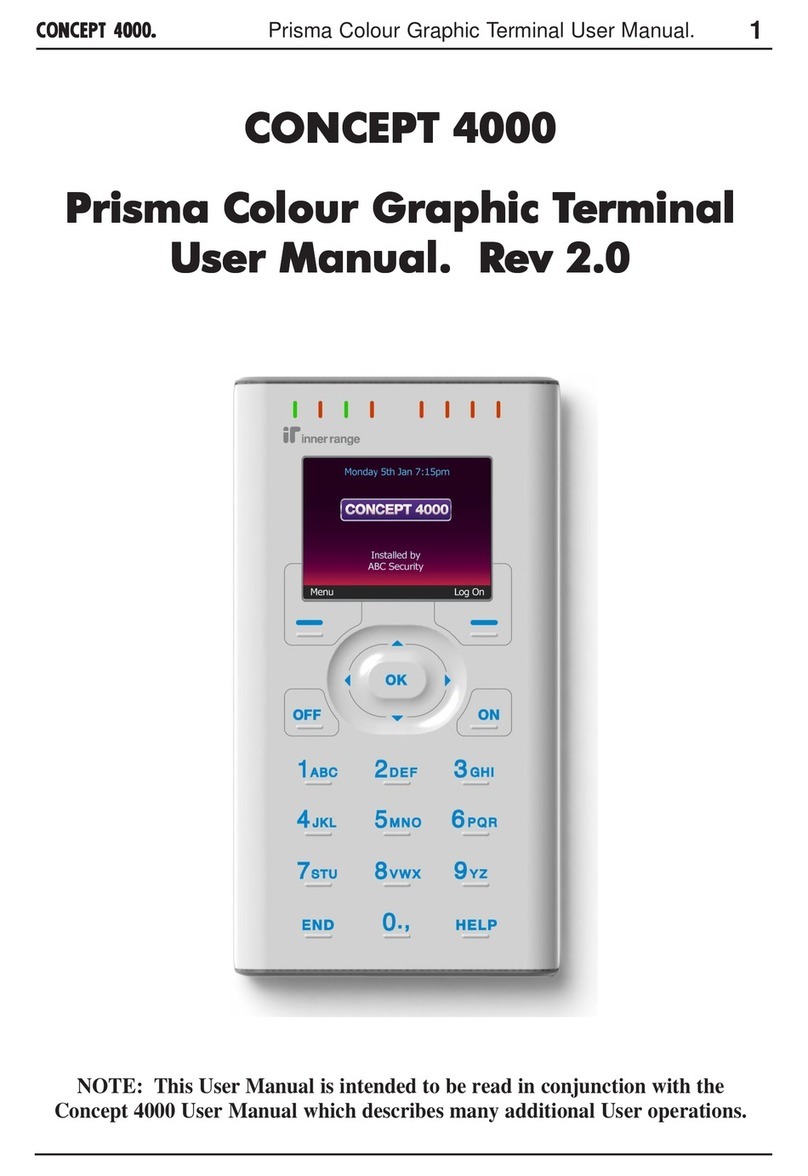Adtron Total Access 1000 Instruction Manual

64179008APL1-5A 1
Total Access 1000 Data Access Terminal
Installation and Maintenance
Section 64179008APL1-5A
Issue 1, April 2003
CLEI Code: VAM2KLOF_ _
CONTENTS
1. GENERAL ........................................................................... 1
2. INSTALLATION/OPERATION ........................................ 7
3. PROVISIONING ............................................................... 10
4. TESTING ........................................................................... 23
5. HDSL2 DEPLOYMENT GUIDELINES ......................... 23
6. SPECIFICATIONS ........................................................... 24
7. MAINTENANCE .............................................................. 24
8. WARRANTY AND CUSTOMER SERVICE ................. 25
Appendix A. Quick Start Guide – ADSL plus POTS.............. A-1
FIGURES
Figure 1. Total Access 1000 DAT ......................................... 1
Figure 2. Total Access 1000 DAT Inside Layout ................. 2
Figure 3. Total Access 1000 DAT Typical Application ....... 3
Figure 4. Total Access 1000 DAT HDSL2 Connections ...... 4
Figure 5. Total Access 1000 DAT Quad ADSL plus
POTS Access Module ............................................. 5
Figure 6. Total Access 1000 DAT PSU ................................. 5
Figure 7. Total Access 1000 DAT Quad H2LIU .................. 6
Figure 8. Total Access 1000 DAT ATM BCU ...................... 6
Figure 9. Total Access 1000 DAT Menu Tree .................... 12
Figure 10. ATM Port Provisioning Menu.............................. 13
Figure 11. ATM PVC/PVP Management Menu ................... 14
Figure 12. ATM Traffic Parameter Defaults Menu .............. 14
Figure 13. IMA Facilities Provisioning Menu ...................... 15
Figure 14. IMA Group Provisioning Menu ........................... 16
Figure 15. Group Failure Monitoring Status Screen ............. 17
Figure 16. All Links Failure Monitoring Status Screen ........ 17
Figure 17. Present Performance Monitoring Statistics
Screen for All IMA Links .................................... 18
Figure 18. LIU Span Status Screen ........................................ 19
Figure 19. LIU Performance Monitoring Statistics ............... 20
Figure 20. Quad ADSL Status Screen ................................... 21
Figure 21. Quad ADSL Circuit Overview Screen ................. 22
Figure 22. H2LIU Network Loopback .................................. 23
Figure 23. HDSL2 Deployment Guidelines .......................... 23
Trademarks: Any brand names and product names included in this document are
trademarks, registered trademarks, or trade names of their respective holders.
TABLES
Table 1. Total Access 1000 DAT Compliance Codes ......... 7
Table 2. Termination Block Pin Assignments ..................... 8
Table 3. Front Panel LEDs ................................................... 9
Table 4. ATM BCU Front Panel LEDs .............................. 10
Table 5. Quad ADSL plus POTS Access Module
Front Panel LEDs ................................................. 10
Table 6. HDSL2 Loss Value ............................................... 24
Table 7. Loop Insertion Loss Data ..................................... 24
Table 8. Total Access 1000 DAT Specifications ............... 24
1. GENERAL
This practice provides installation and maintenance
procedures for the ADTRAN Total Access 1000 Data
Access Terminal (DAT). Figure 1 is an illustration of
the Total Access 1000 DAT enclosure. Refer to
Appendix A for the quick start guide for AD L plus
POT .
Revision History
This is the initial release of this document. Changes in
future revisions will be noted in this subsection.
Description
The Total Access 1000 DAT is a high performance
remote D LAM system for deploying D L and voice
services. A small and versatile platform, the Total
Access 1000 DAT uses span powering along with
IMA signaling to deliver 12 AD L plus POT loops
from two, three, or four HD L2 spans. This design
provides carriers the flexibility needed to meet
customer service commitments.
Figure 1. Total Access 1000 DAT

264179008APL1-5A
The Total Access 1000 DAT is 12.7 inches wide by
14.7 inches high by 5.5 inches deep and is made of
heavy gauge metal. The enclosure can be wall, pole,
or pedestal mounted in an outside plant environment.
Figure 2 shows the inside layout of the Total Access
1000 DAT. Individual access modules insert from the
front. All of the facilities terminate within the
enclosure. urge protection is also provided within
the enclosure.
Architecture
The Total Access 1000 DAT system is comprised of
an outside plant (O P) housing, Quad HD L2 Line
Interface Unit (Quad H2LIU), a span powered ATM
Power upply Unit (P U), ATM Bank Controller Unit
(ATM BCU), and AD L Access Modules.
The O P housing contains all external terminations
including the HD L2 interface, POT termination,
AD L plus POT loop termination, and grounding
terminations. The O P housing provides surge
protection for both the network and subscriber
interfaces.
The Total Access 1000 DAT receives span powering
from a network using a Total Access HD L2 Central
Office (H2TUC) Access Module. The H2TUC
terminates a D 1 IMA interface from the D LAM or
ATM switch. The H2TUC converts the D 1 IMA
signal to 2-wire HD L and adds span powering.
The Quad H2LIU module provides the network
interface for the Total Access 1000 DAT. The H2LIU
terminates three or four HD L2 signals from the
network and passes span powering to the P U. The
P U terminates the span power from the network and
provides regulated operating voltages to all
components within the Total Access 1000 DAT. The
HD L2 signal is converted to an ATM D X-1 IMA
signal and passed to the ATM BCU. The ATM BCU
routes all ATM traffic between the network and the
loop using PVCs.
Figure 2. Total Access 1000 DAT Inside Layout
S
S
S
S
S
S
S
S
S
S
S
S
S
S
S
S
S
S
S
S
S
S
S
S
750
S
S
S
S
S
PSU
1179008L1
POWER
ATM BCU
1179112L1
NETWORK
TEST
A
D
M
I
N
ADSL
1179413L1
L
O
O
P
1
2
3
4
ADSL
1179413L1
L
O
O
P
1
2
3
4
ADSL
1179413L1
L
O
O
P
1
2
3
4
1179109L1
HLIU
L
O
O
P
1
2
3
4
Features
The Total Access 1000 DAT platform features include
the following:
• Pole or Wall mount outside plant cabinet
• HD L2 span powered at +/-190 VDC
• upports up to 12 AD L plus POT lines
• upports up to 24 ports of AD L or HD L or
combination of both
• Uses incoming POT from the Network and
provides AD L plus POT signal to the loop
• upports local and remote provisioning
• GR-487 Compliance for Remote Enclosures (In
process)
• Meets NEB Level 3 requirements
• 10 Year Warranty
Environmental Requirements
Operating Temperature: -40ºC to +65ºC.
torage Temperature: -40ºC to +85ºC.
Relative Humidity: 95 percent, noncondensing.

64179008APL1-5A 3
Each of the three Quad AD L Access Modules
communicates via the backplane with the ATM BCU
and accepts four POT signals from the CO. Each
AD L module provides four 2-wire AD L plus POT
interfaces toward a customer. A fully loaded system
uses three Quad AD L Access Modules and provides
12 data plus voice services. ee Figure 3 for an
application diagram.
Span Power
The Total Access 1000 DAT is completely powered
from the HD L2 spans and requires at least three
spans of HD L2 for proper operation.
WARNING
Risk of electric shock. Voltages up to 190 VDC
may be present on telecommunications circuit.
Always ensure that the frame ground is connected
to the lug inside the O P housing.
S
S
S
S
S
S
S
S
S
S
S
S
S
S
S
S
S
S
S
S
S
S
S
S
750
S
S
S
S
S
PSU
1179008L1
POWER
ATMBCU
1179112L1
NETWORK
TEST
A
D
M
I
N
ADSL
1179413L1
L
O
O
P
1
2
3
4
ADSL
1179413L1
L
O
O
P
1
2
3
4
ADSL
1179413L1
L
O
O
P
1
2
3
4
1179109L1
HLIU
L
O
O
P
1
2
3
4
4 H2TUCs
T1 IMA
12 ADSL plus POTS Lines
HDSL2
(4 Pair)
12 POTS Lines
PSTN
IMA
CPE
Figure 3. Total Access 1000 DAT Typical Application

464179008APL1-5A
The incoming HD L2 spans are terminated on P2, P3,
P4, and P5. ( ee Figure 4). These terminations
provide surge protection for each HD L2 span. Only
three span powered pair are needed for operation, but
using four span powered pair provides redundant
power and/or extra bandwidth to the Total Access
1000 DAT.
pan powering meets all requirements of Class A2
voltages as specified by Bellcore GR-1089-CORE.
Modules
The Total Access 1000 DAT uses several modules to
operate and provide multiple services. There are two
classes of modules, Common Modules and Access
Modules. The Common Modules consist of the P U,
Quad H2LIU, and ATM BCU. These modules are
needed to power up the shelf and to provide the
needed ATM switching fabric for the system. The
Access Modules consist of Quad HD L, Quad
AD L, and Quad AD L plus POT and are used to
provide services to customers.
Figure 4. Total Access 1000 DAT HDSL2 Connections
Loop 3
1
T
R
1
6
11
16
21
2
7
12
17
22
3
8
13
18
23
4
9
14
19
24
21 22 23 24
5
2345
10
678910
15
11 12 13 14 15
20
16 17 18 19 20
25
Loop 4
Loop 2Loop 1
P6 Unused
PSU LIU BCU 1 2 3 4 5 6
PSU
1179008L1
POWER
ATM BCU
1179112L1
NETWORK
TEST
A
D
M
I
N
ADSL
1179413L1
L
O
O
P
1
2
3
4
ADSL
1179413L1
L
O
O
P
1
2
3
4
ADSL
1179413L1
L
O
O
P
1
2
3
4
1179109L1
QUAD H LIU
L
O
O
P
1
2
3
4
1000
HDSL
1
HDSL
2
PWR
1
PWR
2 BYPASS
T R
P2
T R
P3
T R
P4
T R
P5
T R
P6
G
N
D

64179008APL1-5A 5
The Total Access 1000 DAT is designed to support 24
ports of AD L, 24 ports of HD L, up to a 24 port
mixture of AD L and HD L, or 12 AD L plus
POT ports. Currently, ADTRAN offers the dual
wide 4 port AD L plus POT module for use with the
Total Access 1000 DAT. The Total Access 1000
DAT provides 6 access module slots that have access
to 4 copper pairs each.
Quad ADSL plus POTS
The Quad AD L plus POT Access Module is a dual
wide module that fits into two slots in the Total
Access 1000 DAT and provides four ports of AD L
plus POT . ee Figure 5. The POT signal must be
wired in from the Network. The Quad AD L module
takes in the POT and combines it with the AD L on
one single pair. The customer premises must be
equipped with an AD L plus POT splitter for the
POT signal to the telephone and the proper Customer
Premise Equipment (CPE) to terminate AD L.
PSU
The Total Access 1000 DAT P U is a common
module plug-in unit designed for use in the Total
Access 1000 DAT. ee Figure 6. The unit inserts
directly into the P U slot on the Total Access 1000
DAT. The front panel provides an LED for power
indication.
The Total Access 1000 DAT P U operates on -190
VDC received from the span-powered HD L2 pairs.
The P U converts the incoming span power to
regulated voltages for distribution to other modules in
the system.
The P U does not require provisioning to operate in
the system.
Figure 5. Total Access 1000 DAT Quad ADSL
plus POTS Access Module
ADSL
1179413L1
L
O
O
P
1
2
3
4
PSU
1179008L1
POWER
Figure 6. Total Access 1000 DAT PSU

664179008APL1-5A
Quad H2LIU
The Total Access 1000 DAT Quad H2LIU is a
network terminating common plug-in unit used to
terminate the HD L2 circuit over 2-wire metallic
facilities. ee Figure 7. The Quad H2LIU terminates
the HD L2 signals originating from the H2TUCs and
hands off an ATM D 1 IMA signal to the ATM BCU.
Each HD L2 local loop operates as an independent
subsystem, each operating over a single twisted pair.
The Quad H2LIU communicates over these two
twisted pairs to the Total Access 1000 H2TUCs
located at the CO.
ATM BCU
The Total Access 1000 DAT Bank Controller Unit is a
common module plug-in unit. ee Figure 8. The unit
inserts directly into the BCU slot on the Total Access
1000 DAT shelf. The unit terminates the ATM D 1
IMA from the H2LIU and provides distributed
bandwidth to the access module slots upon request.
The ATM BCU provides all control functions for the
Total Access 1000 DAT common units and access
modules. The front panel has one DB-9 connection, a
network status LED, and a TE T status LED.
The Total Access 1000 DAT ATM BCU provisions,
operates, monitors, and tests all Total Access 1000
DAT access modules. The ATM BCU provides the
ATM switching fabric for the system.
1179109L1
QUAD H LIU
L
O
O
P
1
2
3
4
Figure 7. Total Access 1000 DAT Quad H2LIU
ATM BCU
1179112L1
NETWORK
TEST
A
D
M
I
N
Figure 8. Total Access 1000 DAT ATM BCU

64179008APL1-5A 7
C A U T I O N !
SUBJECT TO ELECTROSTATIC DAMAGE
OR DECREASE IN RELIABILITY.
HANDLING PRECAUTIONS REQUIRED.
2. INSTALLATION/OPERATION
After unpacking the unit, inspect it for damage. If
damage is noted, file a claim with the carrier, then
contact ADTRAN. Refer to Warranty and Customer
Service.
The Total Access 1000 DAT can be wall, pole, or
pedestal mounted. Templates are provided with each
system to support accurate mounting of the enclosure.
The Total Access 1000 DAT complies with Part 15 of
the FCC rules. Operation is subject to the following
two conditions:
1. This device may not cause harmful interference,
and
2. This device must accept any interference received,
including interference that may cause undesired
operation.
Changes or modifications not expressly approved by
ADTRAN could void the user’s authority to operate
this equipment.
Compliance
CAUTION
Per GR-1089-CORE October 2002, ection 9,
the Total Access 1000 system is designed and
intended only for installation in a DC-C
(common) Bonding and Grounding system. It is
not intended or designed for installation in a
DC-I (isolated) Bonding and Grounding system.
ee Table 1 for Compliance Codes.
Required Clearances
A minimum 18 inches of clearance is required in front
of the chassis to allow for opening of the enclosure
door.
Mounting Brackets
The Total Access 1000 DAT enclosure contains
brackets that support wall, pole, or pedestal mounting.
Tools Needed (Wall Mount or Polemount)
The Total Access 1000 DAT Chassis mounts and
connects with standard fasteners and hand tools:
• ix #6 x 3/4-inch, flat-head wood screws.
• Drill and drill bit set.
• Flat-head screwdriver (medium).
• Two Phillips-head screw drivers (small /medium)
• elected punch-down block and tool.
Mounting The Enclosure
Install the enclosure as follows:
1. Position the mounting template at the desired
location, observe required clearances.
2. Ensure the mounting template is plumb then mark
through the template holes to identify where the
pilot holes will be drilled.
3. Using a 1/16-inch bit, drill pilot holes at the marked
locations.
4. Mount the chassis using the six #6 by 3/4-inch
flat-head wood screws.
Table 1. Total Access 1000 DAT Compliance
Codes
edoCtupnItuptuO
)sissahC(
)CP(edoCrewoP
)CT(edoCnoitacinummoceleT
)CI(edoCnoitallatsnI
C
X
E
C
X
–
)USP(
)CP(edoCrewoP
)CT(edoCnoitacinummoceleT
)CI(edoCnoitallatsnI
C
X
A
C
–
–
)UIL2H(
)CP(edoCrewoP
)CT(edoCnoitacinummoceleT
)CI(edoCnoitallatsnI
C
X
A
C
–
–
)STOPsulpLSDA(
)CP(edoCrewoP
)CT(edoCnoitacinummoceleT
)CI(edoCnoitallatsnI
C
–
E
C
X
–
)UCBMTA(
)CP(edoCrewoP
)CT(edoCnoitacinummoceleT
)CI(edoCnoitallatsnI
C
–
A
C
–
–

864179008APL1-5A
Connections
WARNING
Risk of electric shock. Voltages up to 190 VDC
may be present on telecommunications circuit.
Always ensure that the frame ground is connected
to the lug inside the O P housing.
All subscriber loop and network connections are made
through termination blocks. Refer to Figure 4.
Connections for the commons and access modules are
made through the backplane. No additional backplane
wiring is necessary for operation.
UL Deployment Guidelines
• Terminate enclosure to a reliable ground source.
• This unit shall be installed in accordance with the
requirements of NEC NFPA 70.
ADSL and POTS Connection
One 25-pair termination block provides the
interconnect wiring for the access modules located in
slots 1 through 6 of the enclosure. When using the
Quad AD L plus POT Access Module, the POT
signal is provided by the network and is connected to
certain pairs on the Total Access 1000 DAT
termination block. The AD L plus POT signal is
then delivered to the customer by other pairs on the
termination block. ee Table 2 for pair assignments.
Table 2. Termination Block Pin Assignments
riaPepyTnoitcennoCremotsuCotTUO/krowteNmorfNI sseccA
eludoM troP
1STOPNI11
2STOPsulpLSDATUO11
3STOPNI12
4STOPsulpLSDATUO12
5STOPNI13
6STOPsulpLSDATUO13
7STOPNI14
8STOPsulpLSDATUO14
9STOPNI31
01STOPsulpLSDATUO31
11STOPNI32
21STOPsulpLSDATUO32
31STOPNI33
41STOPsulpLSDATUO33
51STOPNI34
61STOPsulpLSDATUO34
71STOPNI51
81STOPsulpLSDATUO51
91STOPNI52
02STOPsulpLSDATUO52
12STOPNI53
22STOPsulpLSDATUO53
32STOPNI54
42STOPsulpLSDATUO54

64179008APL1-5A 9
The connections are terminated by pulling out the
connector, slipping the wire through the access holes,
then pushing the connectors back into place
(see Figure 4).
HDSL2 Connection
The HD L2 spans are connected to P2, P3, P4, and P5
(see Figure 4). At least 3 of the four HD L2 spans
must provide span power to the Total Access 1000
DAT. Each HD L2 span may be configured to
transport one D 1 IMA to and from the Total Access
1000 DAT. The Total Access 1000 DAT can operate
with one, two, three, or four D 1 IMA signals being
provided by the network. All terminations provide
surge and corrosion protection.
Power Connection
There are no power terminations. All power is
derived from the HD L2 spans.
Timing Supply
There are no timing terminations. Timing is derived
from the HD L2 spans.
Office Alarms
There are no alarm terminations. All alarms are
carried to the central office via the HD L2 (T1)
overhead. Carrier alarm conditions such as a Red,
Yellow, or Blue (unframed all 1s) will be reported by
the central office equipment.
Installing cards
To install a Total Access 1000 DAT module, grasp the
unit by the front panel while supporting the bottom
edge. Align the card edges to the guide grooves and
insert the unit until the edge connector seats firmly
into the backplane. Lock the card in place by pushing
in the locking lever in against the front panel of the
module.
Front Panel Indicators
PSU Front Panel Indicators
The Total Access 1000 DAT P U front panel contains
a POWER LED indicator. The POWER LED is ON
when the proper power is being received from the
HD L2 pairs and is being distributed properly to the
other modules in the chassis. Table 3 gives the front
panel indicator descriptions.
Quad H2LIU Front Panel Indicators
The Total Access 1000 DAT Quad H2LIU front panel
contains four LED indicators. They are Loop 1, Loop
2, Loop 3, and Loop 4.
Table 3. Front Panel LEDs
DELnoitacidnInoitpircseD
USP
REWOP
ffO
deR
wolleY
neerG
neerGgnihsalF
rewoponsahflehsehtrodeliafyletelpmocsahC-UT2HehT
tsetflesehtfotrapdeliafsahC-UT2HehT
dedaolnwoderawtfosgniebsiC-UT2HehT
tset-flesehtdessapsahC-UT2HehT
)yalpsidretcarahcruofrolanimretUCS(desseccagniebsiC-UT2HehT
UIL2HdauQ
4ot1pooL
ffO
deR
wolleY
neerG
neerGgnihsalF
wolleYgnihsalF
etatsdengissanUSOOehtrofdenoisivorpsipoolgnidnopserrocehT
tiucricehtnostsixenoitidnoctluafadnaecivreSnIsipoolgnidnoserrocehT
tsetanisipoolgnidnopserrocehT
ylreporpgninoitcnufsipoolgnidnopserrocehT
etatsecnanetniaMSOOehtrofdenoisivorpsiC-UT2HehttahtsetacidnI
dedaolnwoderawtfosgniebsiC-UT2HehT

10 64179008APL1-5A
ATM BCU Front Panel Indicators
The network LED labeled NETWORK on the front
panel of the ATM BCU provides status information
for the network D 1 IMA using a color-coded
message format. The TE T LED provides test status
information for the network and access modules. ee
Table 4.
Quad ADSL Access Module Front Panel Indicators
After the initialization sequence, the status of the each
AD L loop is reflected by the color of the
corresponding LOOP LED. ee Table 5 for
descriptions.
3. PROVISIONING
ADMIN Port
The ADMIN interface (DB-9 connector) on the Total
Access 1000 DAT ATM BCU is used to change
provisioning options, obtain access module status
through menu screens, and initiate tests on circuits.
To access the menu screens, connect a VT100
terminal or computer running a terminal emulation
program to the craft interface port using a standard
male-to-female R -232, DB-9 cable. Craft port
settings are as follows:
• 9600 Baud
• No parity
• 8 Data bits
• 1 top bit
CAUTION
The ATM BCU retains provisioning setup when
removed from the chassis. If inserted into another
chassis, the provisioning setup is invoked on
that chassis’ access modules.
Table 4. ATM BCU Front Panel LEDs
Table 5. Quad ADSL plus POTS Access Module Front Panel LEDs
DELnoitacidnInoitpircseD
krowteNneerG
deR
ffO
pUsipuorgAMI
nwoDsipuorgAMI
eruliaferawdrahrorewopoN
tseTneerG
ffO
eludomotdeilppasirewopnehwneergeblliwtub,desunuyltnerrucsiDELsihT
eruliaferawdrahrorewopoN
DELnoitacidnInoitpircseD
4-1pooLneerG
neerGgnihsalF
deR
wolleY
ffO
pUpooL
gniniartpooL
puniartotgnitpmettaton,nwoDpooL
tsetnipooL
dengissanU-ecivreSfotuO

64179008APL1-5A 11
Windows HyperTerminal
Windows HyperTerminal can be used as a VT100
terminal emulation program. Open HyperTerminal by
selecting PROGRAM / ACCE ORIE /
HYPERTERMINAL. Refer to the Help section of
HyperTerminal for additional questions.
NOTE
To ensure proper display background in Windows
HyperTerminal, select VT100 terminal emulation
under ETTING .
Password
Upon initial connection, press the <Esc> key one time
to bring up the prompt for the Account Name. The
default Account Names are ADMIN, READWRITE,
and READONLY in all capital letters.
NOTE
All Account Names and Passwords are case
sensitive. The default Account Names and
Passwords should be entered in UPPER CA E.
The factory default Password is PA WORD in all
capital letters for all default Account Names. Each
Account Name has a different permission level.
ADMIN, by default, is the ystem Administrator login
and allows provisioning of every provisionable option.
The READWRITE Account Name corresponds to the
Technician login, and restricts the user from making
changes to accounts, but allows provisioning of most
provisionable options that correspond to services
provided by the Total Access 1000 DAT. The
READONLY Account Name is just that, an account
that allows read-only access to the Total Access 1000
Menus. Each password can be changed to a user-
selected password if desired. To prevent a remote user
from not being able to access the menus of the Total
Access 1000 DAT after a user has accessed the craft
port, a timed auto-logout will logout the last user after
approximately eight minutes of keyboard inactivity. If
this happens during provisioning, simply logon to the
system again and continue from the last completed
provisioning change.
Menu Navigation
To traverse through the menus, type the number
corresponding to the desired selection and press
<Enter>. On some options, it is necessary to press the
space bar to scroll through available options and press
<Enter> when the correct option is shown. Fields that
need a manual entry are completed by pressing the
space bar to initiate the entry, type the entry, then
press <Enter> to complete the entry. While viewing
any sublevel menu, the <Esc> key may be used to
move up one level or to correct an incorrect entry
(before pressing <Enter>). ee Figure 9 for the Total
Access 1000 DAT menu tree.
Module Provisioning
System Provisioning
The ATM BCU provides the system level
provisioning for the Total Access 1000 DAT. ystem
Level menus include Bank Controller Unit, Line
Interface Unit, Access Modules, ystem Alarms,
Configuration Prompt, and Contact Information. Each
of these individual menus is available for selection
upon a successful logon to the Total Access 1000
DAT. Provisioning for the BCU, LIU, and Access
Modules is covered in the following subsections. The
ystem Alarms menu provides real-time information
concerning both acknowledged and unacknowledged
alarms for the Total Access 1000 DAT. Each alarm is
displayed with a date and time stamp, the Level of the
alarm (Critical, Major, Minor, Alert, or Info), and an
Event Description. The configuration Prompt
provides access to a command line driven menu
system. This provisioning option will be discussed in
one of the following subsections. The Contact
Information menu provides ADTRAN’s contact
information and can not be edited.

12 64179008APL1-5A
Figure 9. Total Access 1000 DAT Menu Tree
Login
1. Bank Controller Unit 1. Configuration
3. System Management
2. Circuit Management
1. ATM Port Provisioning
2. ATM PVC/PVP Management
3. ATM Traffic Parameter Defaults
4. IMA
1. Present
2. Previous
Account Name
Password
1. Configuration
3. Status/Failure Monitoring
4. Performance Monitoring Data
2. Provisioning
Out of Service - Maintenance
Out of Service - Maintenance
Out of Service - Unassigned
2. Line Interface Unit
3. Status
4. Test
3. Access Modules
5. Performance
IMA Group
Unassigned
Pass Through
1. IMA Facility
2. IMA Group
1. Group FM Status
2. All Links FM Status
1. RX DRAM Test
2. TX DRAM Test
1. Password Control
1. Set Password
2. Auto Logout
3. Restore Factory Defaults
1. Present
2. Previous
5. IMA Diagnostic Testing
IMA Transmit ID (0-255)
IMA TX Frame Length
3. IMA Links Data
Disable
Min. TX Active Links
Min. RX Active Links
Max. Link Diff. Delay (0-100)
Group Operation Mode
4. Shortcut Setup
1. Force All Facilities Into Unassigned
2. Force Facility - 0 Init Pass Through (PHY 0)
3. Force Facilities Into IMA Group - 1
In Service
5. IMA Scrambler 1. Enable
2. Disable
6. Restore Factory Defaults
2. IP Address
1. IP Address
2. Subnet Mask
3. VPI
4. VCI
5. Peak Cell Rate
6. Remote IP Address
1. H2TU-R Loop Up Network - Loop 1
2. H2TU-R Loop Up Network - Loop 2
3. H2TU-R Loop Up Network - Loop 3
4. H2TU-R Loop Up Network - Loop 4
5. H2TU-R Loop Down Network - All Loops
7. H2TU-R Loop Down Backplane - All Loops
6. H2TU-R Loop Up Backplane - All Loops
1. Enable
2. Disable
1. SF
2. ESF
3. 60 Minutes
4. 120 Minutes
1. None
2. 20 Minutes
3. 24 Hr Data
1. Reset Data
2. 15 Min Data
6. Code Upload
2. Next Page
1. Clear
4. Baud Rate
1. 9600
2. 19200
3. 38400
5. Upload New Code 1. Upload New Code
2. Exit
1. NIU Loopback
1. Zero Registers
2. Restart Min/Max
2. Loopback Time Out
3. Time/Date 1. Adjust Time
2. Adjust Date
1. Configuration
2. Provisioning (Choose loop 1 - 4)
4. System Alarm
5. Configuration Prompt
6. Contact Information
7. Logoff
1. Access Module in Slot 1
2. Access Module in Slot 2
3. Access Module in Slot 3
4. Access Module in Slot 4
5. Access Module in Slot 5
6. Access Module in Slot 6
3. Framing Mode

64179008APL1-5A 13
ATM Bank Controller Unit
The menus for the ATM BCU are accessed by logging
onto the system and selecting the option
corresponding to Bank Controller Unit from the Main
Menu. Menus provided by the BCU include
Configuration, Circuit Management, and ystem
Management.
Configuration Menu
The Configuration menu for the ATM BCU provides
the following information:
• Unit Name
• CLEI Code
• Part Number
• Product Revision
• oftware Revision
This information can not be manually edited;
however, when a software upgrade is performed, the
software revision field will reflect the new version.
Circuit Management Menu
The Circuit Management menu for the ATM BCU
allows the user to adjust the settings that effect the
ATM traffic handled by the Total Access 1000 DAT.
This includes provisioning Permanent Virtual
Circuits/Permanent Virtual Paths (PVC/PVP), ATM
ports, and IMA Facilities. The Circuit Management
menu has four sub-menus including the following:
• ATM Port Provisioning
• ATM PVC/PVP Management
• ATM Traffic Parameter Defaults
•IMA
The ATM Port Management sub-menu, shown in
Figure 10, allows the user to select what type of
signaling is used for each specific port, enable or
disable the Interim Link Management Interface
(ILMI) for each port, add/modify the PVC/PVPs for
each port, and view each port’s performance
monitoring statistics.
Figure 10. ATM Port Provisioning Menu
Total Access 1000 (ATM)
Unacknowledged Alarms: Major
ATM Port Provisioning
Card Port Signaling ILMI Total PVP/PVC ATM Port Stats
BCU Netw None Disable 0/3 View
1 1 None Disable 0/1 View
1 2 None Disable 0/1 View
1 3 None Disable 0/1 View
1 4 None Disable 0/0 View
3 1 None Disable 0/0 View
3 2 None Disable 0/0 View
3 3 None Disable 0/0 View
3 4 None Disable 0/0 View
5 1 None Disable 0/0 View
5 2 None Disable 0/0 View
5 3 None Disable 0/0 View
5 4 None Disable 0/0 View
Press the Enter key to view statistics for this card/port

14 64179008APL1-5A
The ATM PVC/PVP Management sub-menu, shown
in Figure 11, allows the user to provision PVC/PVPs
for each port. (This is the same menu that can be
accessed from the ATM Port Management menu.)
The ATM Traffic Parameter Defaults sub-menu
allows the user to provision default settings for each
type of PVC/PVP that is to be provided from the Total
Access 1000 DAT. ee Figure 12. The default
settings for each service type should be provisioned to
match the commonly used settings for that type. Each
PVC/PVP that needs special settings may be edited on
a per PVC/PVP basis. ettings changed when
provisioning the individual PVC/PVP override the
corresponding default setting.
Figure 11. ATM PVC/PVP Management Menu
Figure 12. ATM Traffic Parameter Defaults Menu
Total Access 1000 (ATM)
Unacknowledged Alarms: Major
ATM Traffic Parameter Defaults
Endpoint 1 -> Endpoint 2 (Both Directions)
Traffic Type PCR(0) PCR(0+1) SCR(0) SCR(0+1) MBS(0) MBS(0+1) Tagging Pkt Discard
UBR N/A Best Eff N/A N/A N/A N/A N/A Yes
CBR N/A 0 N/A N/A N/A N/A No Yes
VBR-rt N/A 0 N/A 0 N/A 0 No Yes
VBR-nrt N/A 0 N/A 0 N/A 0 No Yes
Endpoint 2 -> Endpoint 1
UBR N/A Best Eff N/A N/A N/A N/A
CBR N/A 0 N/A N/A N/A N/A
VBR-rt N/A 0 N/A 0 N/A 0
VBR-nrt N/A 0 N/A 0 N/A 0
Note: This screen allows modification of the DEFAULT settings of the
various traffic parameters. These settings can be overridden on
a per PVC/PVP basis in the PVC/PVP Management menu.
PVC/PVP Management - Card: All Port: All
Endpoint 1 Endpoint 2
Circuit ID Card Port VPI VCI <-> Card Port VPI VCI
1 ADSLloop1 BCU Netw 0 100 1 1 0 35
2 ADSLloop2 BCU Netw 0 101 1 2 0 35
3 ADSLloop3 BCU Netw 0 102 1 3 0 35
Circuit ID: ADSLloop1 Pkt Discard Tagging Done?
Select: Enabled N/A No
Endpoint1 -> Endpoint2 Endpoint2 -> Endpoint1
Service PCR(0+1) PCR(0+1)
1 UBR Best Effort Best Effort
Endpoint 1: Card Port VPI VCI <-> Endpoint 2: Card Port VPI VCI
BCU Netw 0 100 1 1 0 35
Enter # or use arrow keys to pick circuit; space bar for choices or c,d,m,n,p,t

64179008APL1-5A 15
The IMA menu provides additional sub-menus
including:
• Configuration
• Provisioning
• tatus / Failure Monitoring
• Performance Monitoring Data
• IMA Diagnostic Testing
The IMA Configuration menu provides information
concerning the IMA revision, version and type. The
IMA Configuration menu is a read-only display that
can only be updated by installing new software
revisions.
The IMA Provisioning menu allows the user to view
and make changes to IMA Facilities, IMA Groups and
IMA Links. The IMA Provisioning menu also
provides a shortcut setup menu that allows the user to
easily place all IMA Facilities into group 1, unassign
all facilities, or put each facility in pass-through. The
IMA Provisioning menu also allows the user to enable
or disable scrambling on the IMA signal. This option
must match the setting on the Network end of the IMA
loop. Each of the individual IMA Facilities may be
placed in the IMA Group, Unassigned tate, or
Pass-Through tate via the IMA Facility sub-menu.
ee Figure 13.
Figure 13. IMA Facility Provisioning Menu
Total Access 1000 (ATM)
Unacknowledged Alarms: None
IMA Facility Provisioning
Facility(0) Facility(1) Facility(2) Facility(3)
Receive Mode IMA_Group IMA_Group IMA_Group IMA_Group
Transmit Mode IMA_Group IMA_Group IMA_Group IMA_Group
Receive Group 1 [13;38H3 1 1
Receive Link ID 0 1 2
Receive ATM Address N/A N/A N/A N/A
Transmit Group 1 1 1 1
Transmit Link ID 0 1 2 3
Transmit ATM Address N/A N/A N/A N/A

16 64179008APL1-5A
The IMA Group Provisioning sub-menu, shown in
Figure 14, allows the user to make changes to the
following options:
• IMA Transmit ID
• IMA TX Frame Length
• Minimum TX Active Lengths
• Minimum RX Active Lengths
• Maximum Length Differential Delay
• Group Operation Mode
The IMA Links sub-menu allows the user to enable or
disable the TX and/or RX portions of each IMA link
individually. All the options, provisionable under the
IMA Provisioning menu, may be set to the factory
default settings by choosing the option corresponding
to Restore Factory Defaults on the IMA Group
Provisioning menu.
Figure 14. IMA Group Provisioning Menu
Total Access 1000 (ATM)
Unacknowledged Alarms: None
IMA Group Provisioning
IMA Transmit ID (0-255) 1
IMA TX Frame Length 128
MRX Active Links 1
1
Max. Link Diff. Delay (0-100) 100
Group Operation Mode Out of Service - Maintenance
Note: Changing ID or Frame Length requires that All Facilities be UNASSIGNED !

64179008APL1-5A 17
The IMA tatus / Failure Monitoring (FM) tatus
screen allows the user to view statistics vital to
successful operation of the Total Access 1000 DAT.
This screen provides a high-level look at the IMA
Group or a detailed look at the IMA Links. The
Group Failure Monitoring tatus screen is shown in
Figure 15 and the All Links Failure Monitoring tatus
screen is shown in Figure 16.
Figure 15. Group Failure Monitoring Status Screen
Figure 16. All Links Failure Monitoring Status Screen
Total Access 1000 (ATM) 2/06/02 11:08
Unacknowledged Alarms: None
Link - 0 Link - 1 Link - 2 Link - 3
NE Tx State : Active Active Active Status Active
NE Rx State : Active Active Active Active
FE Tx State : Active Active Active Active
FE Rx State : Active Active Active Active
NE Rx Failure : No Failure No Failure No Failure No Failure
FE Rx Failure : No Failure No Failure No Failure No Failure
Relative Delay : 0 0 0 0
Rx LIF Defect :
Rx LODS Defect :
‘?’ - System Help Screen
Total Access 1000 (ATM) 2/06/02 11:07
Unacknowledged Alarms: None
IMA Group 1 Failure Monitoring Status
NE Group State : Operational
FE Group State : Operational
NE Failure Status : No Failure
FE Failure Status : No Failure
Link With Least Delay : 3
Max Link Differential Delay : 0
Configured TX Links : 4
Active Tx Links : 4
Configured RX Links : 4
Active Rx Links : 4
Group Traffic State Machine : Up
FE Failure Data : Available
‘?’ - System Help Screen

18 64179008APL1-5A
The IMA Performance Monitoring Data Menu
provides the user with present Performance
Monitoring (PM) statistics, as well as PM statistics for
the previous 6 hours. An example of the Present PM
status screen for All Links is shown in Figure 17.
The IMA Diagnostic Testing Menu provides the
ability to run both transmit and receive DRAM tests.
These tests are destructive and therefore can ONLY be
run while all IMA Facilities are unassigned.
System Management Menu
The ystem Management Menu allows the user to
modify non-service affecting parameters of the ATM
BCU. Parameters that may be adjusted via the ystem
Management Menu include the following:
• Passwords
• IP Address and Management PVC
• Time and Date
• Craft Port Baud Rate
The Password Control sub-menu allows the user to
provision three passwords, each with a different
permission level. There are three permission levels
offered, Read Only, Technician, and ystem
Administrator. This is explained in detail in the
Password section of this document (above).
The IP Address sub-menu allows the user to provision
the management PVC, the IP parameters for
management, and it displays the MAC Address for the
ATM BCU. These parameters must be provisioned
before the system may be remotely managed through
in-band Telnet.
The Time/Date sub-menu allows the user to set the
date and time. The date in entered in a MM/DD/YY
format and the time is entered in a 24hr clock manner.
The Baud Rate sub-menu allows the user to set the
baud rate of the craft port to 9600, 19200, or 38400
bps. The terminal or terminal emulator program must
be set at the matching baud rate to achieve
communication with the Total Access 1000 DAT.
The ystem Management Menu also allows the user to
upgrade the software for the ATM BCU. New
software may be uploaded using a Craft port or Telnet
connection with Y-modem protocol.
Line Interface Unit
The menus for the LIU are accessed by logging onto
the system and selecting the option corresponding to
Line Interface Unit from the Main Menu. Menus
provided by the LIU include Configuration,
Provisioning, tatus, Test, Performance, and Code
Upload.
Figure 17. Present Performance Monitoring Statistics Screen for All IMA Links
Total Access 1000 (ATM) 2/06/02 13:02
Unacknowledged Alarms: None
IMA Link PM Data - Present
Link - 0 Link - 1 Link - 2 Link - 3
IMA Violations : 0 0 0 0
NE Sev. Err. Sec. : 0 0 0 0
NE Unavail. Sec. : 0 0 0 0
NE Tx Unusable Sec. : 0 0 0 0
NE Rx Unusable Sec. : 0 0 0 0
NE Tx Failures : 0 0 0 0
NE Rx Failures : 0 0 0 0
OIF Anomalies : 0 0 0 0
Tx Stuffs : 1634 1634 1633 1634
Rx Stuffs : 1634 1633 1634 1634
FE Sev. Err. Sec. : 0 0 0 0
FE Unavail. Sec. : 0 0 0 0
FE Tx Unusable Sec. : 0 0 0 0
FE Rx Unusable Sec. : 0 0 0 0
FE Tx Failures : 0 0 0 0
FE Rx Failures : 0 0 0 0
‘?’ - System Help Screen

64179008APL1-5A 19
The LIU Configuration Menu allows the user to view
general information about the unit including unit
name, part number, CLEI code, and revision numbers.
The LIU Configuration menu is a read-only menu that
is only updated when new software revisions are
installed.
The LIU Provisioning Menu allows the user to view
and make changes to options concerning each HD L2
port. The LIU Provisioning Menu provides an NIU
Loopback sub-menu, a Loopback Timeout sub-menu,
and a Framing Mode sub-menu. The NIU Loopback
sub-menu allows the user to enable or disable each
loop’s response to loopback codes. The first screen
that is shown is for Loop 1. Other Loops may be
accessed by using N for next and P for the previous
Loop. When NIU Loopback is Enabled, the unit will
accept and act upon loopback codes sent from the
network. When NIU Loopback is Disabled, loopback
codes are ignored. The Loopback Time Out submenu
allows the user to set a Loopback Time Out for each
port. The Loopback Time Out may be set to None, 20
Minutes, 60 Minutes, or 120 Minutes and dictates the
maximum time that a circuit may remain in the
loopback condition. The Framing Mode submenu
allows the user to choose between uperFrame ( F)
and Extended uperFrame (E F) framing for each
HD L2 Port.
The LIU pan tatus Menu provides the user to with
statistics vital to successful operation of the Total
Access 1000 DAT. This menu provides signal quality
statistics in terms of Margin (current/minimum/
maximum) for each HD L2 loop. Attenuation
(current/maximum), Errored econds (E ), everely
Errored econds ( E ), and Unavailable econds
(UA ) for the last 15-minute interval are also revealed
on the LIU pan tatus screen. An example of the
LIU pan tatus screen is shown in Figure 18.
The LIU Test Menu allows the user to invoke a
Network Loopback for each individual port or a
Backplane Loopback, which puts a Line Loopback on
all ports at once.
Figure 18. LIU Span Status Screen
Total Access 1000 (ATM)
HDSL2 Quad LIU Span Status
H2TU-R
Loop 1 Loop 2 Loop 3 Loop 4
-------- -------- ------- ---------
MARGIN(CUR/MIN/MAX): 16/00/17 17/00/17 17/00/17 17/00/17
ATTEN(CUR/MAX): 00/01 00/01 01/02 00/01
ES: 000 000 000 000
SES: 000 000 000 000
UAS: 000 000 000 000
1. Zero Registers
2. Restart Min/Max
Selection :

20 64179008APL1-5A
The LIU Performance Menu provides the user with
present PM statistics (within the last 15 minutes), as
well as PM statistics for the previous 24 hours.
tatistics may be viewed in 15-minute intervals
(previous three hours) or in daily intervals (one 24-hr
period). An example of the LIU Performance
Monitoring screen is shown in Figure 19.
The LIU Code Upload Menu allows the user to
upgrade the software for the H2LIU. New software
may be uploaded using the Craft interface or Telnet
connection with Y-modem protocol.
Access Modules
The Access Modules Menu is the gateway to each of
the installed access modules in the Total Access 1000
DAT. Currently, ADTRAN offers the Quad AD L
plus POT Access Module, but is in the process of
developing a single wide Quad AD L Access Module
and a single wide Quad HD L Access Module.
Documentation concerning provisioning of existing
access modules is contained in the following
subsections.
Quad ADSL Access Module
All Access Modules are accessed by logging onto the
Total Access 1000 DAT and selecting the option
corresponding to Access Modules, then selecting the
option corresponding to the appropriate Access
Module. The Quad AD L plus POT Access Module
provides the following menus:
• Configuration
• Provisioning
• tatus
• Alarms
• Performance
• ATM Loopback
The AD L Configuration Menu allows the user to
view general information about the unit including unit
name, part number, CLEI code, and revision numbers.
The AD L Configuration menu is a read-only display
that is only updated when new software revisions are
installed.
The AD L Provisioning Menu provides the three
submenus and an option to reset the module to the
factory default settings. The Line Provisioning
sub-menu provides access to each of the four AD L
ports on the module. Each AD L port is provisioned
separately to accommodate various CPE. Options
available four each port include Line ervice tate,
Rate Mode, Data Path election, Target Margin,
Minimum Transmit Rate, Minimum Receive Rate, and
Maximum Interleave Delay. These options should be
Figure 19. LIU Performance Monitoring Statistics
Total Access 1000 (ATM)
15 Minute H2TUR Loop 1 Performance Data
Menu ES SES UAS
000 000 000
1. Reset Data 13:30 000 000 000
2. 15 Min Data 13:15 000 000 000
3. 24 Hr Data 13:00 000 000 000
12:45 000 000 000
12:30 000 000 000
12:15 000 000 000
12:00 000 000 000
11:45 000 000 000
11:30 000 000 000
11:15 000 000 000
11:00 000 000 000
10:45 000 000 000
Selection :
Next Loop(N)/Previous Loop(P)
Table of contents
Popular Touch Terminal manuals by other brands
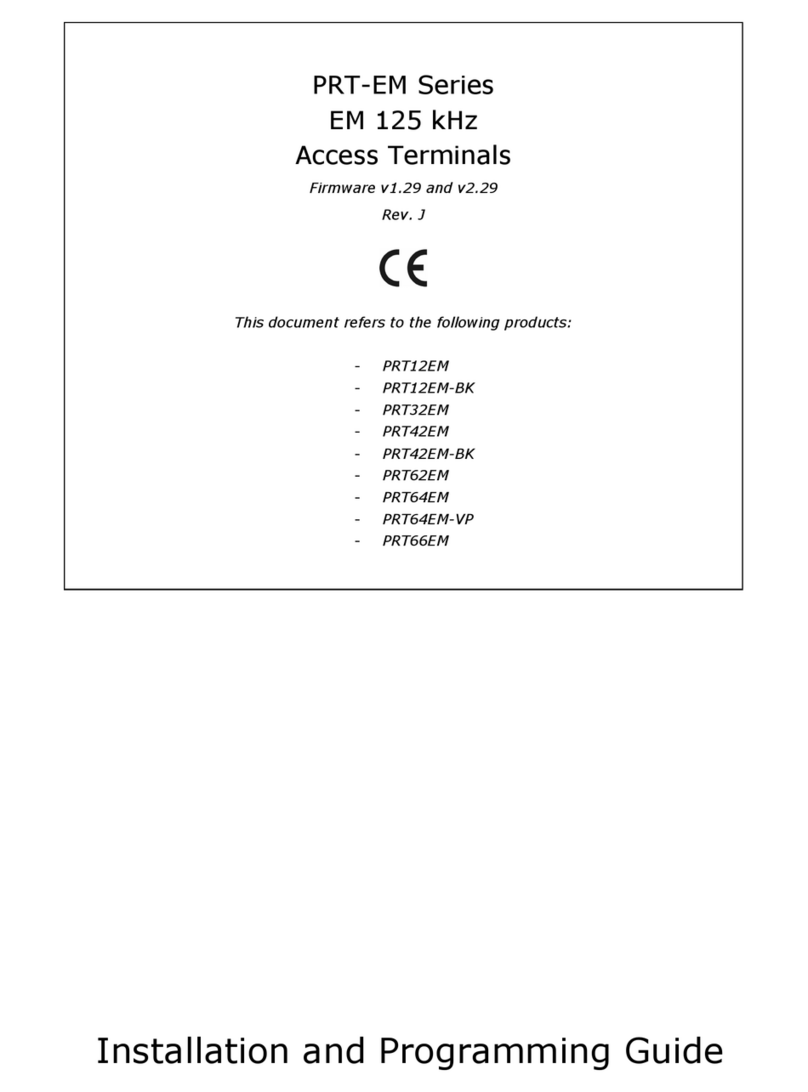
Roger
Roger PRT-EM Series Installation and programming guide
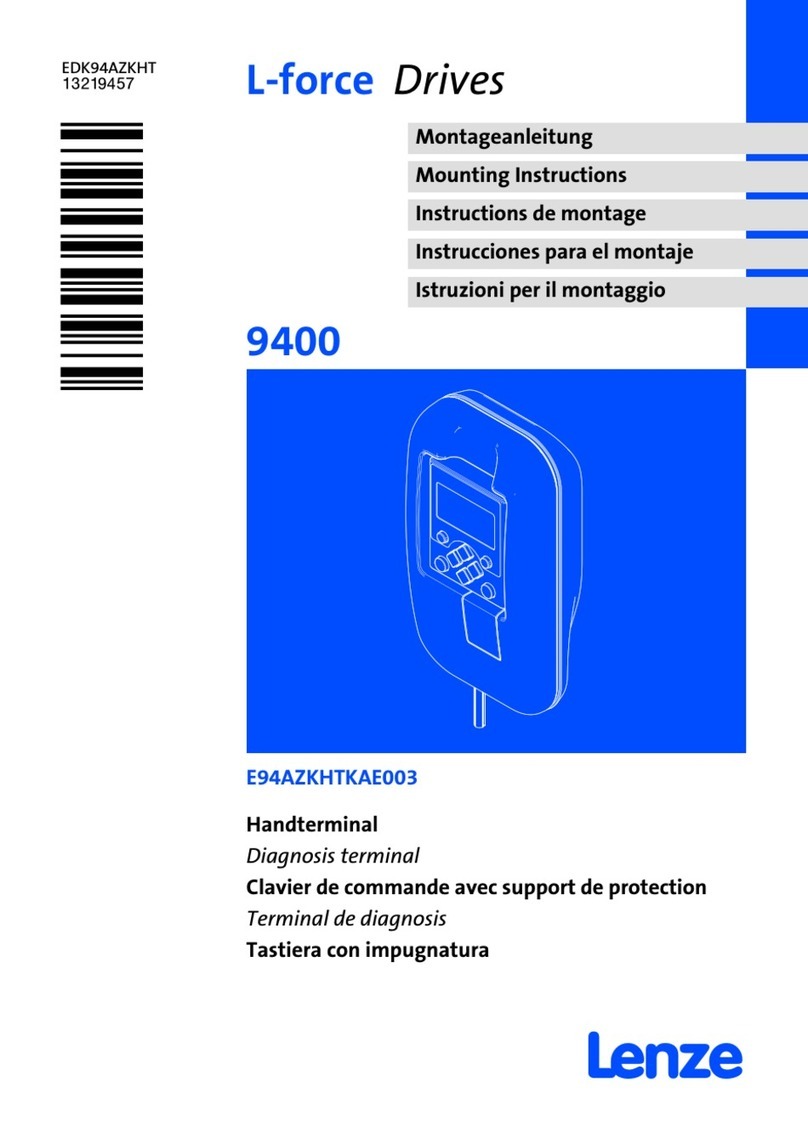
Lenze
Lenze E94AZKHTKAE003 Mounting instructions

Touch Dynamic
Touch Dynamic Breeze user manual

Digital Equipment
Digital Equipment VT225 user manual
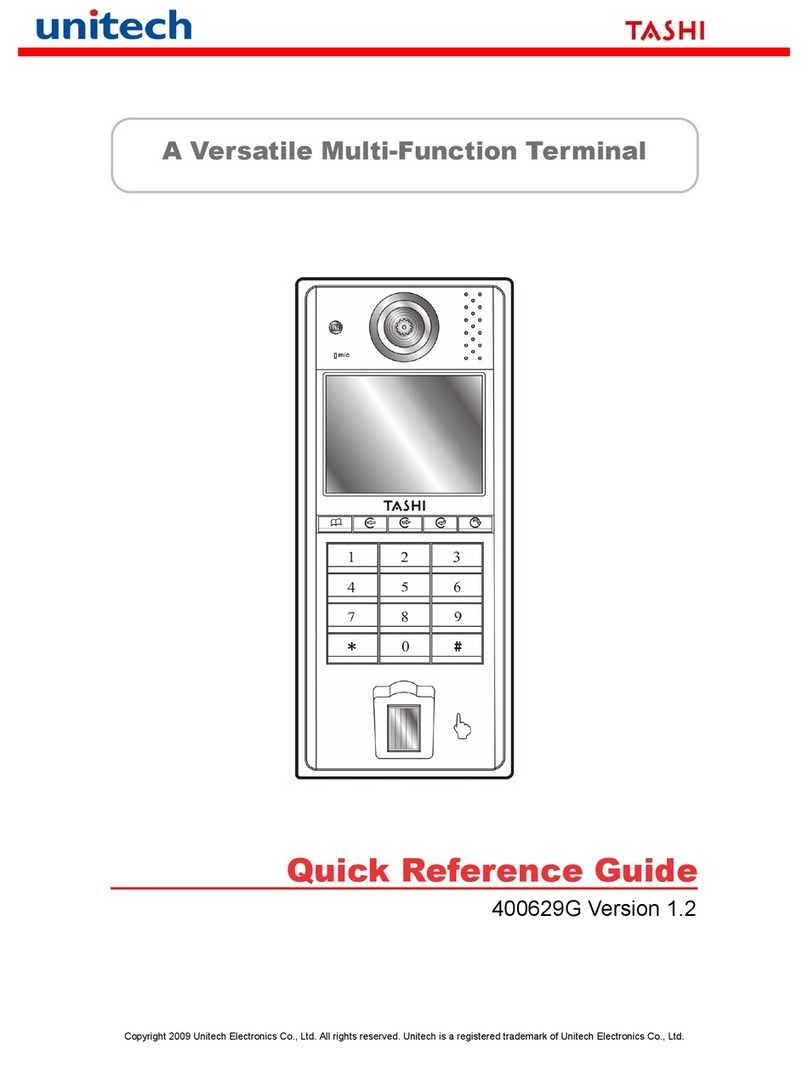
Unitech
Unitech Tashi Quick reference guide
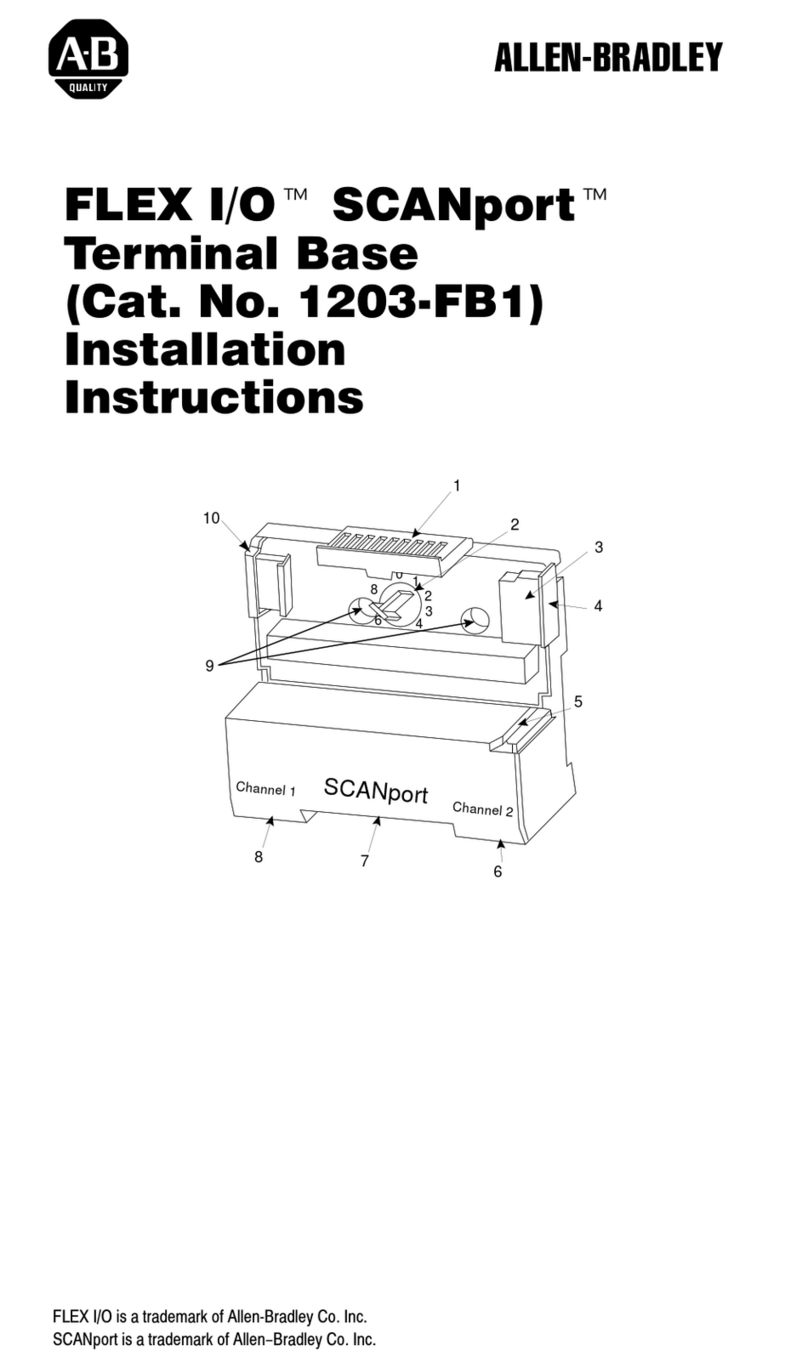
Allen-Bradley
Allen-Bradley FLEX I/O SCANport 1203-FB installation instructions
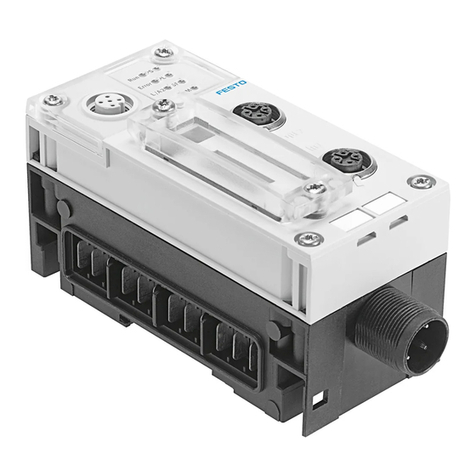
Festo
Festo CPX-FB38 Electronic manual
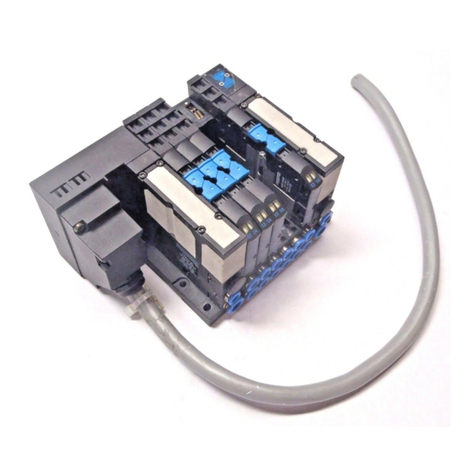
Festo
Festo CPA10VI manual
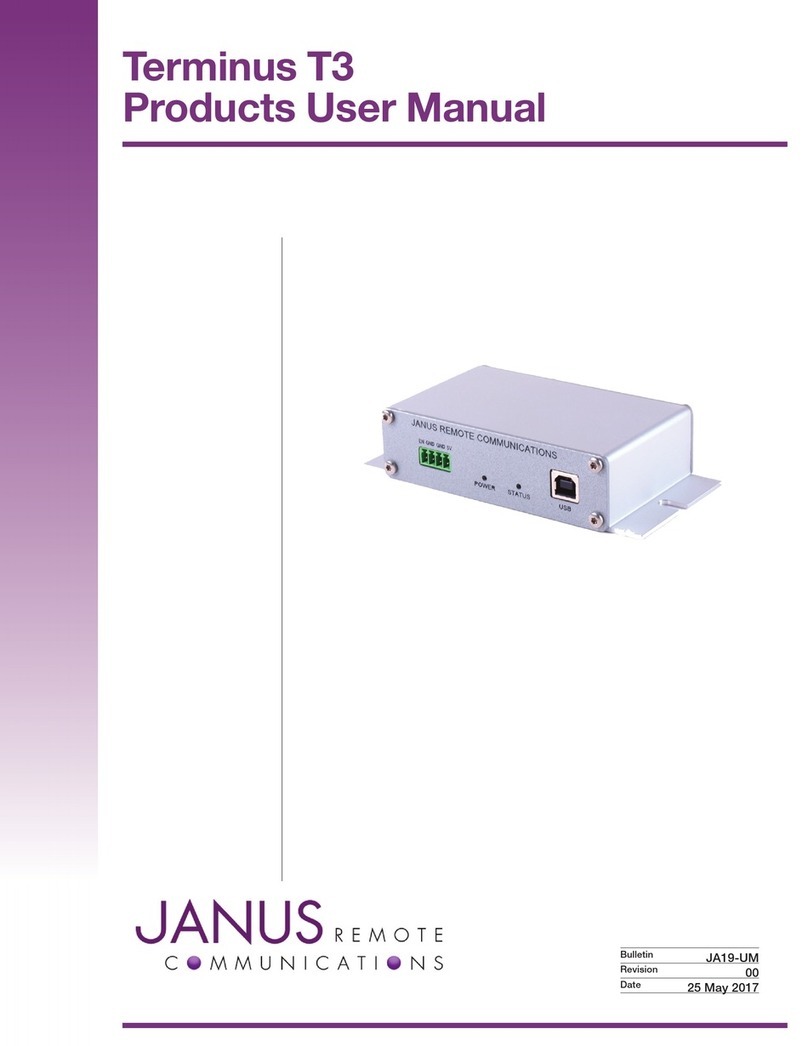
Janus Remote Communications
Janus Remote Communications Terminus T3 Product user manual
Opticon
Opticon PHL 2700 user manual
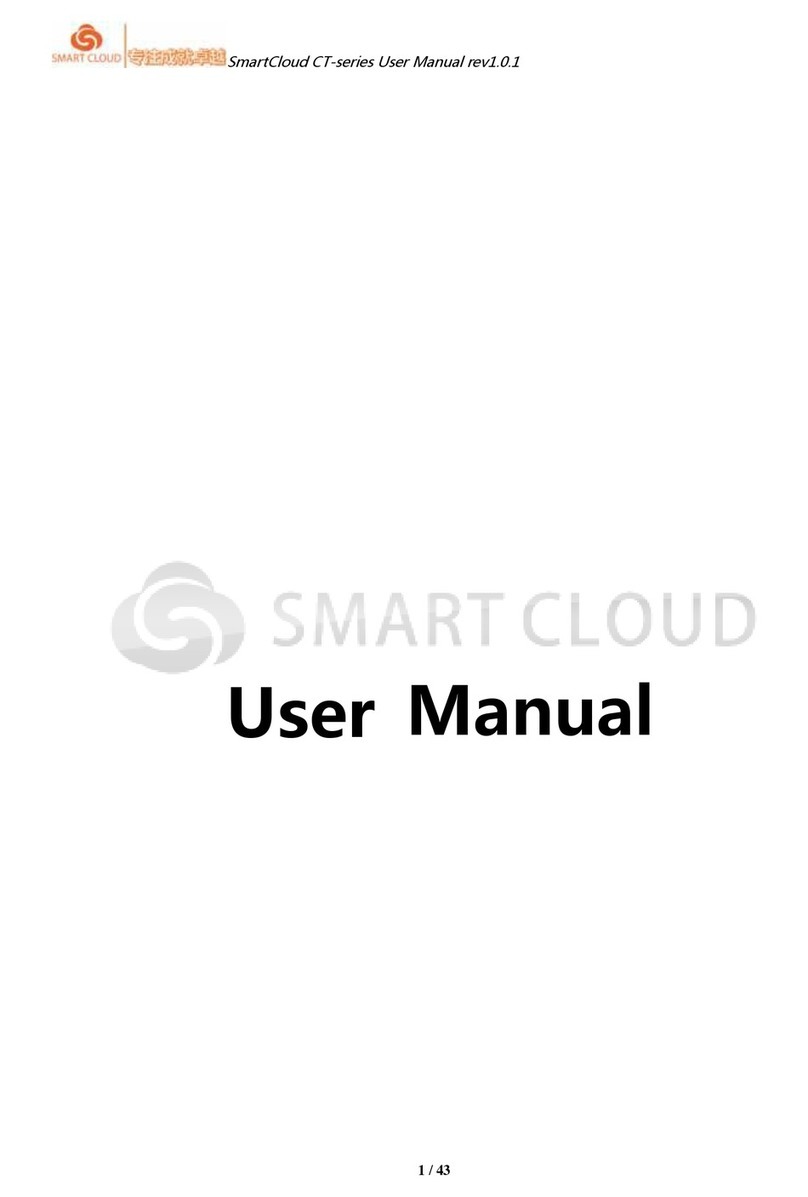
SmartCloud Technologies Ltd.
SmartCloud Technologies Ltd. CT Series user manual
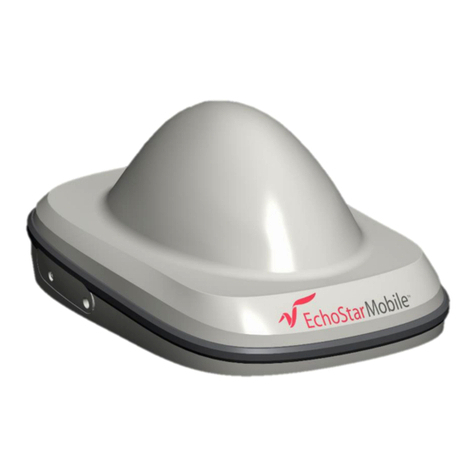
Hughes
Hughes EchoStar Mobile 4500 user guide
